Stripe satin is one of the varieties of jacquard satin. The fabric is in high demand, has excellent performance and good decorative properties. The material is widely used for sewing bed sets, bedspreads and clothes.
Composition and properties
Stripe satin belongs to luxury fabrics and has a shiny surface with a clearly marked two-sided pattern, consisting of alternating strips of glossy and matte finish. Stripe satin also owes its name to the presence of bands that sound stripe in English.
A brilliant, effective surface is obtained with a special way of weaving threads, during which one weft overlaps four warp threads, shifting one thread with each new row. Thanks to the front weft flooring, the formed fabric acquires an extraordinary smoothness and beautiful iridescent shine. In its composition, stripe satin is completely natural and consists of 100% cotton. However, to give the material a greater decorative effect, lycra is sometimes added to its composition, because of which the shiny stripes look more elegant and are effectively shaded with matte.
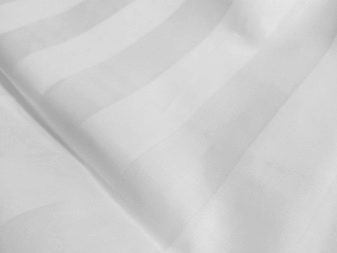
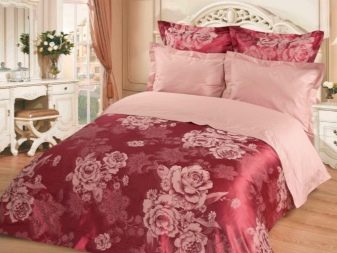
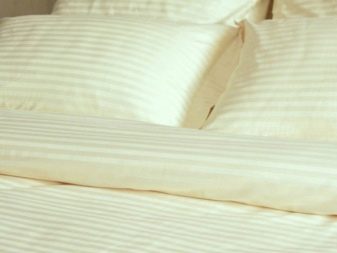
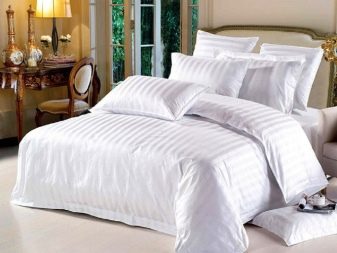
In addition to the fact that the material looks quite stylish and elegant, it is highly resistant to mechanical stress. Without loss of brightness of colors and without loss of their original forms, the fabric is able to transfer more than 300 washing / ironing cycles, which is a fairly high indicator for materials in this category.
In addition, in the manufacture of fabrics, manufacturers use only natural dyes, which in combination with a cotton composition makes the fabric completely hypoallergenic and environmentally friendly. The paint is applied to the threads immediately before the start of weaving, and the technologies by which dyeing occurs allow the dyes to penetrate deep into the fiber structure of the threads. At the final stage of the production of the canvas, they undergo a special treatment that protects the surface of the material from loss of gloss and burnout.
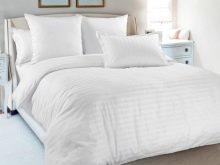
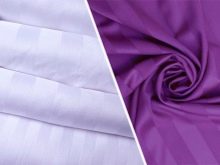
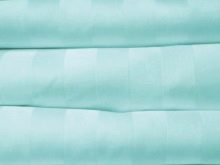
Advantages and disadvantages
High consumer demand and a large number of approving reviews about stripe satin due to a number of undeniable advantages of this material.
- The fabric is quite strong and wear-resistant, which is explained by a rather high density, component from 140 to 180 g / m2.
- Stripe satin is not prone to shedding, which makes it easy to cut and sew.
- The material is not subject to deformation and shrinkage, which allows you not to worry about maintaining the original appearance of things after washing.
- A variety of geometric ornaments and shades greatly facilitates the choice and allows you to purchase fabric for every taste.
- Despite the fact that the surface of the material is smooth and silky, bed linen sewn from stripe satin does not stick to the skin and does not crumple.
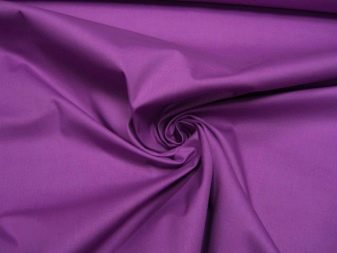
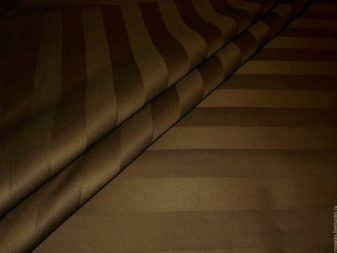
In addition to the obvious advantages, stripe satin has its own weaknesses. First of all, it is low breathability. The material is not able to provide complete air exchange, which is why in the summertime sleeping on bedding sewn from this fabric is quite uncomfortable. Another disadvantage is the high cost of stripe satin products, which, however, is quite understandable by their natural origin. The fact that in the presence of a mattress with a synthetic coating, the sheet often slides off the bed is also a disadvantage, which causes some inconvenience when using bed sets. However, on soft sofas and cotton mattress covers, the fabric behaves differently and does not cause trouble for sleeping.
Application area
The scope of use of the material is quite wide. It is often used for sewing bed sets, underwear, dresses, men's shirts, curtains, curtains, tablecloths and bedspreads, and is also used as a lining fabric for dresses and raincoats. At the same time, clothes and bedding are sewn from less dense types of stripe satin, the density of which varies from 120 to 150 g / m2, while home textiles, curtains and bedspreads require the use of a more dense and stiff material, with indicators of 180 g / m2.
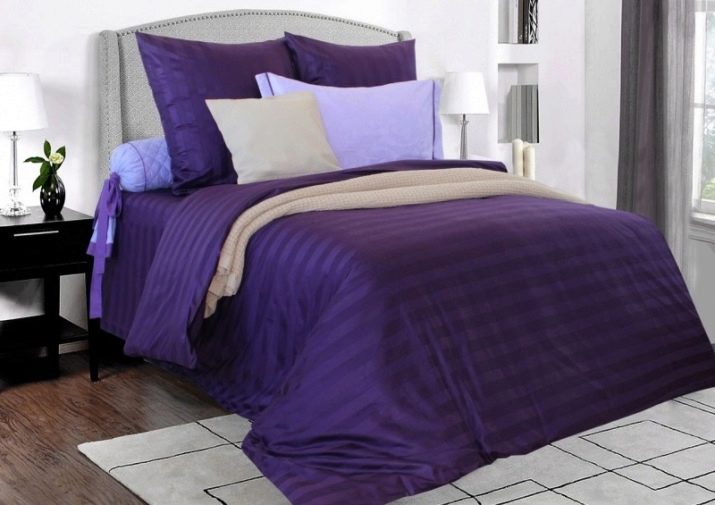
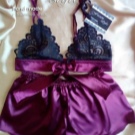
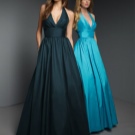
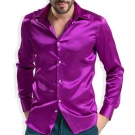
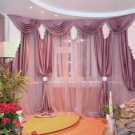
Even a novice seamstress can sew a product from stripe satin. This is due to the fact that due to the presence of clearly visible stripes, laying a perfectly flat line will not be difficult. High decorative qualities of the fabric are also due to the fact that the presence of stripes is well suited for many styles. For example, striped curtains, rugs and tablecloths can perfectly fit into the English interior. A strict geometric pattern is well suited for sewing business clothes, for example, suits, dresses or skirts.
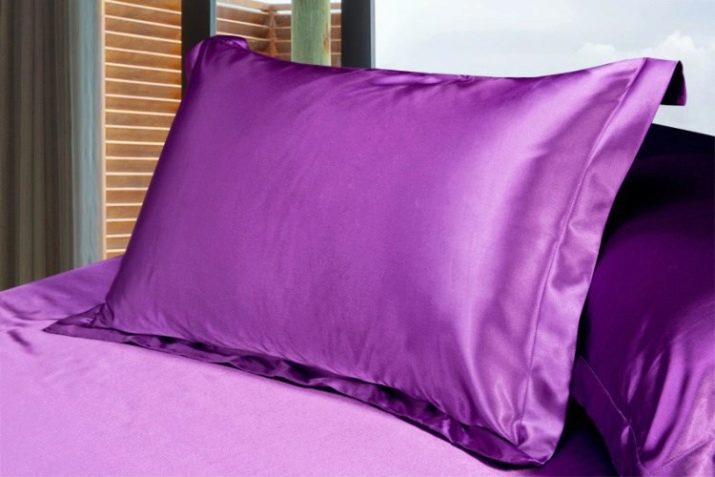
All models of clothing sewn from stripe satin are highly worn and do not lose their original appearance for a long time. Styles for such things usually choose the simplest, due to the fact that the fabric itself is very beautiful and does not need the presence of a large number of decorating details.
Criterias of choice
The main criterion for choosing stripe satin is its functional purpose. So, if not a finished product is purchased, but a piece of fabric, then its quality, color and performance are selected based on what will be sewn from it. For bed sets, it is recommended to purchase linen in white and light colors, with a density of not higher than 150 g / m2.Too dense fabric will not provide even minimal ventilation and sleep on such linen will be extremely unpleasant. If stripe satin is bought for sewing curtains, bedspreads or tablecloths, then in this case you need to buy fabric of maximum density. Such products will retain their shape perfectly and will not sag after the first wash. And when buying material that will be used as a lining fabric for skirts and outerwear, on the contrary, it is better to choose the thinnest and least dense fabric.
The density of the material is usually indicated in the accompanying documentation, but if you can’t see its possibility, you can determine the approximate density visually. To do this, look through the canvas at the light. The outlines of people and objects should be vague and rather vague. If everything that happens around is clearly visible through the fabric, then most likely, on the counter there is either a fake or material, in the manufacture of which the production technology was violated. Therefore, it is better to refuse such a purchase. You should also check whether there is a note in the documents about mercerization. If such a mark is worth it, then you can safely buy a fabric and not worry about the fact that the gloss and brightness of paints will disappear after the first wash.
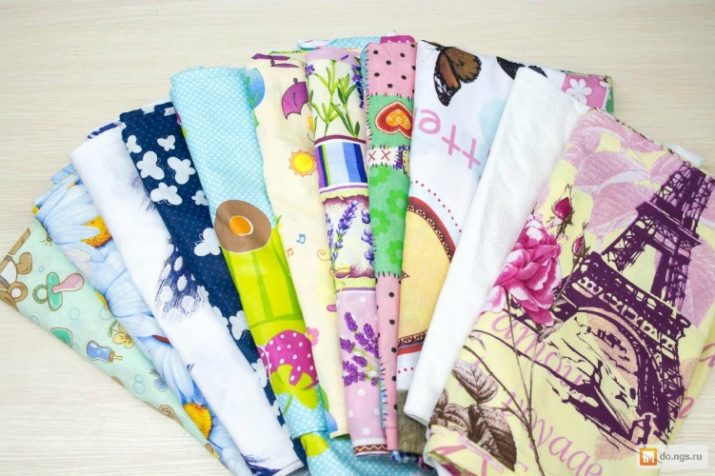
Care Tips
Despite the fact that stripe satin belongs to the category of undemanding care materials, some rules must be observed when washing it. First, wash items made from this fabric separately from other things. In no case should the material be placed in the drum together with rigid polyester fabrics, or with clothing decorated with rhinestones, beads or sequins. Otherwise, there is a risk of pulling the threads from stripe satin, after which it will be impossible to remove the puffs. Secondly, it is important to observe the temperature regime. The optimum temperature is 40 to 60 degrees. Moreover, low-density material is better to wash in cooler water.
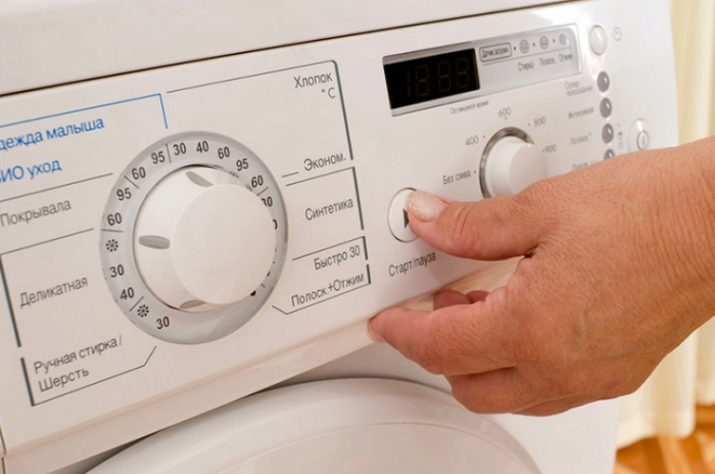
In addition, pillowcases, duvet covers and clothes should be turned inside out before being placed in the machine, and drying is also recommended when turned inside out. This will prevent the appearance of spools and will contribute to a better stretching of the products. When washing stained fabrics, adding bleaching compounds is prohibited. Otherwise, due to the inhomogeneous structure of the material, light stains and spots may appear on its surface, which cannot be eliminated. For washing white products, it is recommended to use gentle chlorine-free bleaching agents.
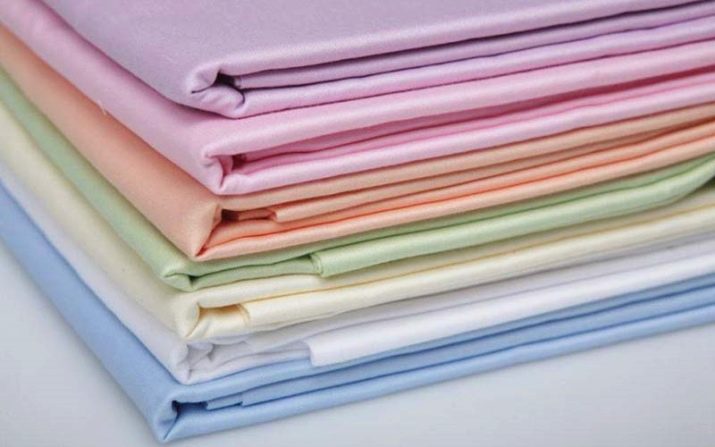
Drying stripe-satin clothes is better in the fresh air, and to achieve their complete drying is not necessary: the dry fabric smoothes much better and does not need additional moisture. It is recommended to iron products only from the wrong side in the "Cotton" heating mode. After ironing, clothes should be left on the shoulders for some time and only then put away in the closet. This will allow the moisture remaining in the seams to evaporate and prevent things from caking during long-term storage.
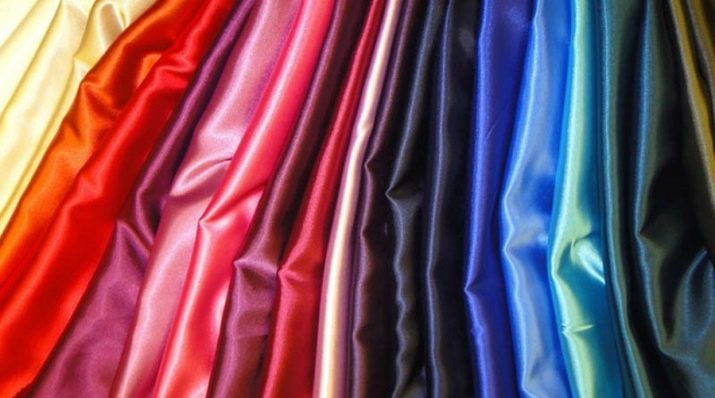
When purchasing stripe satin, consumers, as a rule, do not regret their choice. After all, despite some shortcomings, the fabric is able to make a variety in any interior, become a wardrobe decoration and provide a calm and comfortable sleep.
What is stripe satin and how to distinguish it from other fabrics, see the next video.










